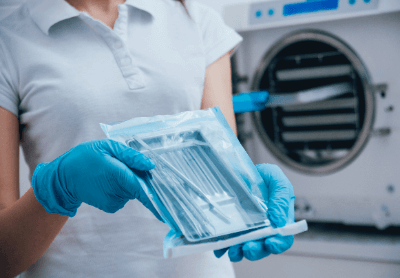What Is an Autoclave Bag?

An autoclave bag is a specialized container designed for the sterilization of instruments and disposal of waste materials using an autoclave. These bags are made from materials like polypropylene that can withstand the high temperatures and pressures of autoclaving, a process that uses saturated steam to sterilize contents quickly and efficiently.
Uses of Autoclave Bags
Autoclave bags have several critical applications, particularly in settings where sterility and biohazard management are paramount:
- Maintaining Aseptic Conditions: Sterilizing instruments to ensure they remain sterile until use.
- Sterilization: Safely sterilizing infectious or biohazardous waste directly at the disposal site.
Principle of Autoclave Bags
There are two main types of autoclave bags, tailored for different sterilization needs:
- For Instrument Sterilization: These bags often feature a combination of film and paper surfaces, allowing steam to penetrate and sterilize the contents while preventing microbial ingress or egress. They are usually heat-sealable and include a temperature indicator for validation purposes.
- For Infectious Waste: Made from heat-resistant polypropylene, these bags are designed to contain and sterilize infectious waste. They typically come with a mechanism for easy sealing and are autoclaved without being tightly sealed to accommodate pressure changes.
Handling and Precautions
When using autoclave bags, several precautions should be observed:
- Ensure bags are heat resistant up to at least 130°C and suitable for the items being autoclaved.
- Place bags in an autoclave basket or container to prevent damage during the pressurization process.
- Avoid placing sharp objects directly in the bags to prevent tears.
- For waste disposal, do not tightly seal the bags before autoclaving to allow for pressure changes.
By adhering to these guidelines, autoclave bags can be used effectively to maintain a sterile environment and manage biohazardous waste, ensuring safety and compliance in medical, laboratory, and industrial settings.